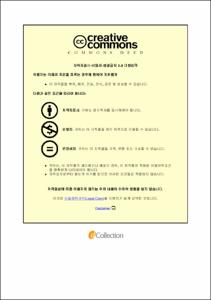딥 러닝을 이용한 MR2급 오일 탱커의 저항 추정
- Alternative Title
- Estimation of the resistance of MR2 class oil tanker using deep learning
- Abstract
- Abstract
Today, with the rapid development of science and technology, the development of science and technology is very fast, and many traditional industries are affected. The purpose of this paper is to apply artificial intelligence technology to the ship design process, to help us improve work efficiency, and to save time required for the preliminary design of ships.
Because 70-80% of the cost of a ship's product is decided at the design stage, most of the information about a ship is decided in the preliminary design stage. It is very important to optimize the resistance design in the preliminary design stage. If the ship's resistance performance is good in the design stage, it will reduce the energy consumption of the ship in the course of sailing.
For the resistance optimization design in the preliminary design stage, the traditional ship resistance test method is towing tank test, but the test needs a lot of time and expense. Since the 1960s, with the rapid development of computer technology, CFD (Computational Fluid Dynamics) has developed rapidly. Numerical simulation has become the main method for hydrodynamic performance analysis of ships today and has been widely used in the self-design of ships However, this method also needs more time to calculate the resistance of a ship. In the design stage, the designer can not get feedback in a short time to get the change of performance after changing some information. Therefore, the designer can not design the ship type at will. In many cases, the mother ship is selected first, and then by changing its information and shape, we can find the ship type that meets the design requirements.
With the birth of the concept of artificial intelligence, machine learning, and deep learning have been widely applied in some industries, which makes us see new design methods and many new directions created by the combination of artificial intelligence and traditional industries.
The theme of this research is to apply deep learning to ship design, to estimate the resistance of the ship, so that the designer can change the information of the ship type at will and get feedback in a short time, which is very helpful for the self-design stage.
However, if you want to get an accurate deep learning network model to realize this function, you need appropriate data and an appropriate neural network structure to realize it. If there are some ship hull form data and the corresponding ship resistance data to train the neural network, the regression function between the ship hull form data and the ship resistance will be obtained.
It will reduce a lot of time to estimate ship resistance by a trained neural network. However, in order to improve the training accuracy and avoid excessive calculation of ship resistance, this study only estimates the resistance of MR 2 class oil tanker.
In this study, the principal component analysis method was used to generate the new ship. The eigenvalue of the PCA is used as input data, and the output data is the resistance calculated by Open FOAM software. There are a total of 119 sets of data.
In the neural network model, the number of hidden layers and internal nodes are the most important factors. Using TensorFlow API in Python, different neural network structures models are established, the errors of different neural network structures are calculated, and then the neural network model with the smallest calculation error is selected. Finally, the neural network model is chosen as the hidden layer = 6, the nodes = 20, and the minimum error is 2.4009%.
- Issued Date
- 2022
- Awarded Date
- 2022. 8
- Type
- Dissertation
- Publisher
- 부경대학교
- Affiliation
- 부경대학교 대학원
- Department
- 대학원 마린융합디자인공학과
- Advisor
- 김동준
- Table Of Contents
- Ⅰ. 서론 1
Ⅱ. 저항 계산 및 선종 선택 4
1. OpenFOAM 소개 4
1.1 OpenFOAM 개요 4
1.2 OpenFOAM 구조 프레임 6
1.3 OpenFOAM응용구분 7
2. interFoam 솔버 소개 8
2.1 프로그램 구조 8
2.2 simple 알고리즘 10
2.3 interFoam 솔버 12
2.4 DTCHull 예제 13
3. 선종 선택 19
3.1 프로그램 구조MR2 oil tanker 소개 19
3.2 OpenFOAM을 사용하여 계산한 저항의 결과 검증 22
Ⅲ. 선종 생성 및 저항 계산 24
1. PCA 방법 소개 24
2. SVD 방법 소개 28
3. PCA와 SVD의 관계 29
4. 새로운 선종을 생성하고 저항 계산 30
4.1 모선선택 30
4.2 새로운 선형을 생성 31
Ⅳ. 선종 생성 및 저항 계산 39
1. 딥러닝 소개 39
2. 딥러닝 신경망의 구조와 계산과정 41
2.1 Forward Propagation 계산 과정 42
2.2 Back Propagation 과정 44
3. MR2 oil tanker의 저항 추정 47
3.1 신경망 구조 47
3.2 과적합과 과소적합 49
3.3 계산결과와 결과분석 52
Ⅴ. 결론 65
참고문헌 68
- Degree
- Master
- Appears in Collections:
- 대학원 > 마린융합디자인공학과
- Files in This Item:
-
-
Download
 딥 러닝을 이용한 MR2급 오일 탱커의 저항 추정.pdf
기타 데이터 / 3.68 MB / Adobe PDF
딥 러닝을 이용한 MR2급 오일 탱커의 저항 추정.pdf
기타 데이터 / 3.68 MB / Adobe PDF
-
Items in Repository are protected by copyright, with all rights reserved, unless otherwise indicated.